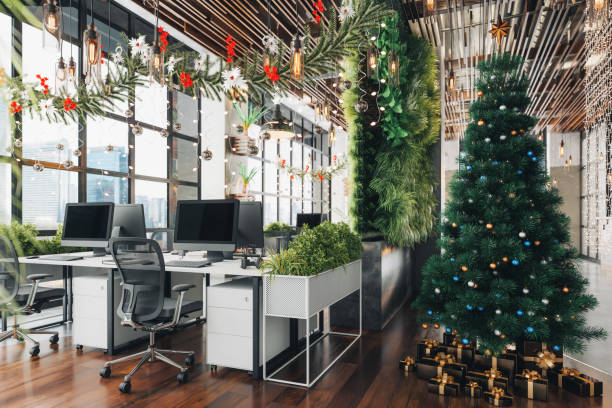Lighting is a crucial aspect of interior design that often doesn’t receive the attention it deserves. The right lighting can transform a space, enhancing its ambiance, functionality, and overall aesthetic appeal. From illuminating task areas to setting the mood for relaxation, selecting the perfect lights for your space requires careful consideration. In this article, we’ll delve into the world of lighting design, exploring different types of lighting fixtures and how to choose the ideal ones for your home or workplace.
Understanding the Basics of Lighting
Before diving into the specifics of choosing lighting fixtures, it’s essential to understand the basic principles of lighting design. There are three primary types of lighting:
- Ambient Lighting: Also known as general lighting, ambient lighting provides overall illumination to a space. It ensures that the room is adequately lit without creating harsh shadows. Examples include ceiling-mounted fixtures, recessed lights, and wall sconces.
- Task Lighting: Task lighting is focused illumination designed to help you perform specific activities, such as reading, cooking, or working at a desk. Desk lamps, under-cabinet lights, and pendant lights over kitchen islands are common examples of task lighting.
- Accent Lighting: Accent lighting adds drama and visual interest by highlighting specific architectural features, artwork, or decorative elements within a space. Track lighting, picture lights, and recessed spotlights are popular choices for accent lighting.
Now that we’ve covered the basics, let’s explore how to choose the perfect lights for different areas of your home or workplace.
Living Room
The living room is a multifunctional space where you entertain guests, relax with family, and unwind after a long day. When selecting lighting for the living room, aim for a combination of ambient, task, and accent lighting to create a warm and inviting atmosphere.
Start with ambient lighting using ceiling-mounted fixtures or recessed lights to provide overall illumination. Then, layer in task lighting with table lamps or floor lamps positioned near seating areas for reading or other activities. Finally, add accent lighting to highlight artwork, architectural features, or decorative elements such as shelving or fireplaces.
Consider incorporating dimmer switches for added versatility, allowing you to adjust the brightness of the lights to suit different occasions and moods.
Kitchen
In the kitchen, functionality is key, making task lighting a top priority. Proper illumination is essential for food preparation, cooking, and cleaning tasks. Under-cabinet lighting is an excellent choice for illuminating countertops and work surfaces, while pendant lights above the kitchen island can provide both task lighting and visual interest.
In addition to task lighting, ambient lighting is essential to ensure that the entire kitchen is well-lit. Consider installing recessed lights or track lighting to provide overall illumination without creating glare or shadows.
To add a touch of style and sophistication, consider incorporating decorative pendant lights or chandeliers above the dining area or kitchen island. These fixtures can serve as focal points while also providing functional lighting for meal times and gatherings.
Bedroom
The bedroom should be a tranquil retreat where you can relax and unwind at the end of the day. When choosing lighting for the bedroom, prioritize creating a cozy and calming atmosphere.
Start with ambient lighting using ceiling-mounted fixtures or wall sconces to provide soft, diffused illumination throughout the room. Avoid harsh overhead lighting that can be too stimulating and disrupt sleep.
For task lighting, bedside lamps are a must-have for reading or other activities in bed. Choose lamps with adjustable brightness settings or opt for dimmable bulbs to create a relaxing ambiance.
To add a touch of luxury, consider incorporating accent lighting such as a statement chandelier or pendant lights above the bed. These fixtures can add visual interest while also providing ambient illumination.
Home Office
With more people working from home than ever before, creating a functional and well-lit home office is essential for productivity and comfort. When designing your home office lighting scheme, prioritize task lighting to ensure adequate illumination for work-related activities.
Start with ambient lighting using ceiling-mounted fixtures or track lighting to provide overall illumination. Then, layer in task lighting with desk lamps or adjustable floor lamps positioned near your workspace to minimize glare and shadows.
Consider the specific tasks you’ll be performing in your home office and choose lighting fixtures accordingly. For example, if you’ll be reading printed documents, opt for a task lamp with a focused beam of light. If you are working on a computer, consider incorporating indirect lighting to reduce eye strain and glare.
In addition to task lighting, accent lighting can help personalize your home office and create a more inviting atmosphere. Consider adding a desk lamp with a pop of color or incorporating LED strip lights to highlight shelves or artwork.
Choosing the perfect lights for your space is about more than just functionality—it’s about creating the right ambiance, enhancing visual appeal, and improving overall comfort and well-being. By understanding the basic principles of lighting design and considering the specific needs and requirements of each area in your home or workplace, you can select lighting fixtures that not only illuminate but also inspire and delight. Whether you’re designing a cozy bedroom retreat, a stylish living room, or a productive home office, let your creativity shine as you explore the endless possibilities of lighting design.





